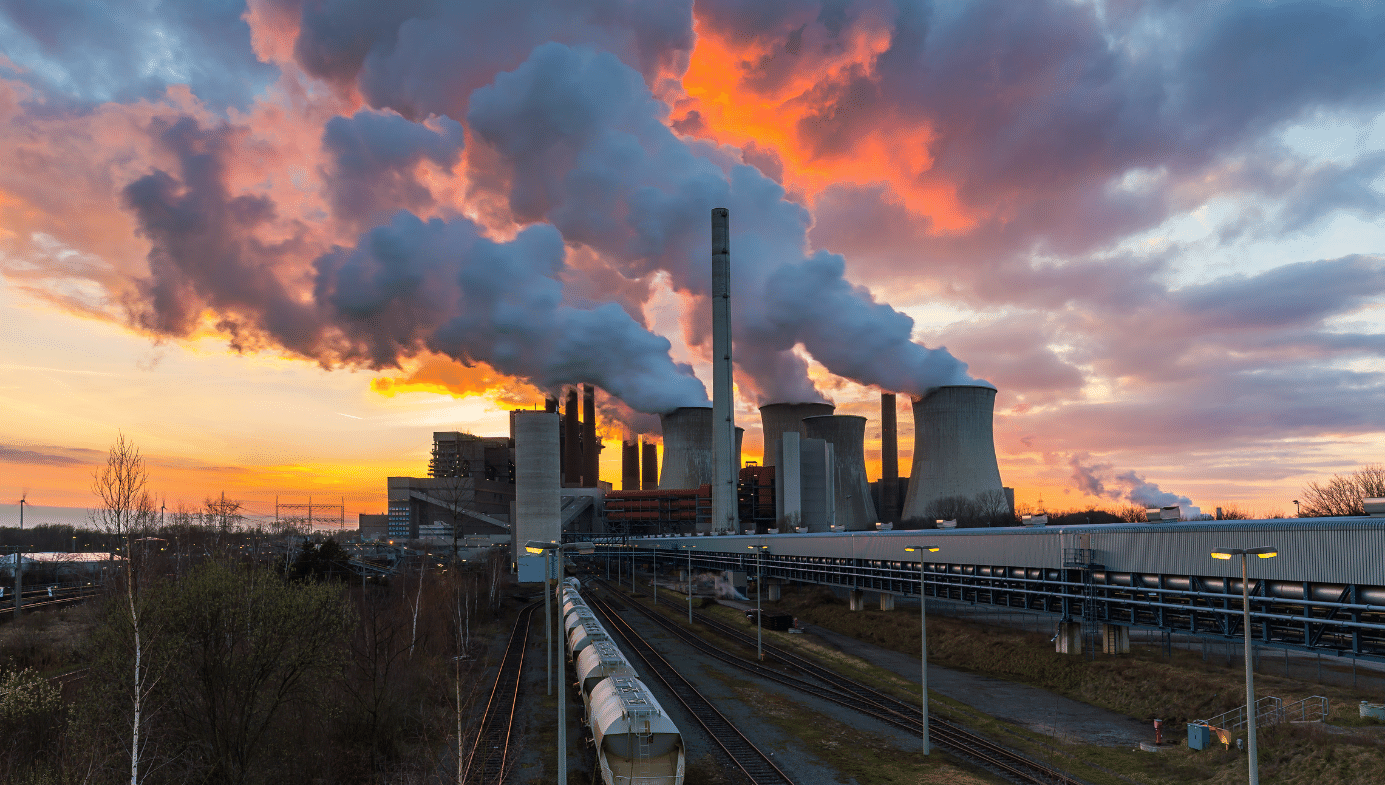energy
Germany's Energy Catastrophe
If Russia permanently cuts off natural gas exports to Germany, it will likely send the country, the world’s fourth-largest economy, into a severe recession.

Germany may be the only nation that has based its energy policy on absolution.
Germans call it Energiewende (“energy transition”), and they aim to decarbonize their economy and lead the world by replacing their fossil fuel and nuclear plants with renewable energy. Germany is the first major nation to undertake such an effort, and, as hoped for, their early adoption of renewables has catalyzed a spectacular drop in costs for those technologies. A reporter summed up German attitudes towards the Energiewende, writing, “Germans would then at last feel that they have gone from being world-destroyers in the 20th century to world-saviors in the 21st.”
The Energiewende gained legislative support in 2010, and Germany spent nearly 202 billion euros on renewable energy projects from 2013 to 2020. Since 2010, the share of German electricity generation that has come from solar and wind power has risen from 8 percent to 31 percent, no small feat.
Yet Russia’s invasion of Ukraine has laid bare critical weaknesses in German energy policy. Before the war in Ukraine, Germany received 55 percent of its natural gas imports from Russia. While that percentage has fallen since the war began, the European Union chose not to ban Russian gas imports because gas is so crucial to EU nations like Germany. Unsurprisingly, Putin has been using Russia’s gas flows to exert influence over Germany and the EU. Russia recently cut flows through the Nord Stream 1 pipeline, which connects Germany and Russia, by 60 percent, an action that coincided with the leaders of Germany, Italy, and France visiting Kyiv.
And it gets worse. Nord Stream 1 will be out of commission for 10 days due to scheduled maintenance starting July 11. Putin used maintenance issues as the pretense for the initial drawdown in Nord Stream gas flows, sparking fears from German leaders that Russia will simply refuse to reopen the pipeline after the maintenance. If Russia permanently cuts off natural gas exports to Germany, it will likely send the country, the world’s fourth-largest economy, into a severe recession.
In response to these pressures, German leaders have considered reopening shuttered coal plants to shore up their economy and national security. Coal is the dirtiest source of electricity, releasing more greenhouse gas emissions and deadly air pollution than any other energy. Boosting its production is a damning policy failure. How did the world’s preeminent renewable energy champion find itself in a situation where it would be reopening coal plants?
The truth is that the Energiewende was doomed to fail from the start. Germany bet big on solar and wind and shut down their nuclear plants when they should have forgone renewables and expanded their nuclear energy program instead. Germany’s anti-nuclear ideology is so rigid that they closed three nuclear plants in December 2021, despite the global energy crisis, and plan to close their last three nuclear plants this December, despite Russia’s energy extortion.
Solar and wind power have inherent flaws that prohibit them from ever forming the backbone of an industrialized nation’s electrical grid. They require nearly 100 percent backup because they depend on the vagaries of the weather. Just look at how energy from solar and wind fluctuates. In 2019, wind power on one day rose to 59 percent of German power generation, but it fell to as low as 2.6 percent on another day of the year. In the same year, solar peaked at 25 percent and bottomed out at 0.3 percent.
To control these swings and provide reliable power, renewables advocates argue that battery storage and hydrogen can store electricity and dispatch it when solar and wind aren’t producing. Germany’s largest battery storage program is its home storage systems, but years of battery storage installations have barely made an impact on the German grid. The country currently has an estimated 435,000 homes equipped with battery storage systems of various capabilities, and 145,000 home storage systems were installed in 2021. But there are 40 million households in Germany, and home battery storage systems usually last only a few hours, while the grid needs storage that can support variations lasting weeks.
Plus, storage of any kind incurs round-trip energy losses while increasing total costs, since the grid was originally designed to function without needing it. Cost and inherent inefficiency are the key problems facing hydrogen. German news magazine Der Spiegel reported on this problem in 2019:
From a business perspective, [hydrogen] isn’t worth it. Much of the energy is lost in the process of turning wind into electricity, electricity into hydrogen, and then hydrogen into methane – efficiency is below 40 percent. It isn’t enough for a sustainable business model.

Renewables actually lock in fossil fuels because they can’t finish the job. This helps explain why Germany depends heavily on Russian natural gas.
Another essential issue with solar and wind power is that they lack energy density. A power source with low energy density takes more space and physical materials to generate electricity than a source with high energy density. Solar plants in Germany take up approximately 500 times more land than nuclear plants, and wind clocks in at 415 times more.
These steep land costs eventually trigger intense local opposition. Most people don’t want to live near electrical infrastructure, and renewables are more likely to be near people than energy-dense sources like nuclear. In Germany, only 12 percent of the 7,700 kilometers of transmission needed for the Energiewende had been built as of 2019, in part because of local opposition. The slow pace of transmission expansion and a stark slowdown in wind turbine construction led Der Spiegel to determine that “[t]he wind power boom is over.”
Renewables can’t decarbonize or power a modern economy. There’s only one source of clean power that can replace fossil fuels at scale while having minimal land-use and environmental impacts. That’s nuclear.
Nuclear power is the safest way to make reliable electricity, according to research published in The Lancet. A 2013 study conducted by NASA and Columbia University researchers found that nuclear power has saved 1.8 million lives by preventing the burning of fossil fuels. Hence, the Energiewende has effectively contributed to avoidable deaths by closing nuclear plants instead of coal plants.

But what about the nuclear accidents at Chernobyl and Fukushima Daiichi? The Chernobyl nuclear accident in 1986 in modern-day Ukraine is the deadliest in the history of the technology. But the death toll is less than you would think. The UN has concluded that 28 firefighters died from acute radiation syndrome, and it is documented that 15 people had died from thyroid cancer by 2008. The UN predicts another 50 to 160 fatalities over an eighty-year lifespan.

These deaths are tragic, but to put it in perspective, between 170,000 and 230,000 people were killed in China in 1975 when the Banqiao Dam collapsed. The death toll from Chernobyl is small because the radiation caused only thyroid cancer, which is one of the most treatable cancers and requires only basic medical care.
The 2011 nuclear accident at Fukushima Daiichi led the then-German Chancellor Angela Merkel to reverse her decision to delay by a decade the closure of nuclear plants. Like Chernobyl, Fukushima has been much less deadly than people have believed. In fact, as far as we know only one person has died from radiation due to the Fukushima meltdown. Most of those who were exposed to radiation received doses that were equivalent to the natural background radiation one is exposed to just by living in Japan for a year or two.
Nuclear waste is a major concern that people have about the technology. But nuclear waste has never hurt anybody in the 60 years of civilian nuclear energy. The cooling pools and concrete and steel casks that store nuclear waste have proven highly effective.
Nuclear plants in the West currently run over cost and past deadlines. In a typical case, the French company EDF began constructing two new reactors in the United Kingdom in 2017 at an estimated cost of $US22.5 billion, but EDF later raised the estimated cost to itself to $US33 billion. However, the cost of constructing nuclear plants doesn’t have to be exorbitant. A 2015 study by two French economists examined past nuclear construction in France and the US and found that the only way to control costs was to build the same design with the same team repeatedly. This is what the US and France have done in the past, and any country that follows this path can succeed.
Despite high construction costs, electricity generated by nuclear plants is usually affordable because the plants are inexpensive to run. Conversely, integrating substantial amounts of renewables is costly. By 2025, Germany will have spent around $US580 billion on the Energiewende. According to an analysis by the think tank Environmental Progress, had Germany spent those funds on new nuclear plants instead of renewables, the country would have a 100 percent emissions-free electrical grid, as well as enough clean energy to power its cars and light trucks.
Nuclear power can scale rapidly, meaning it can decarbonize a nation quickly. Because of the 1973 oil crisis, France embarked on the fastest energy transition of any large economy by investing in nuclear. In 15 years, France opened 56 nuclear reactors. At the end of this spree, France generated 76 percent of its energy from nuclear. Today, around 70 percent of France’s power is nuclear-generated, the highest of any nation.
However, France’s current situation undermines its reputation as a success story. Around half of France’s 56 nuclear reactors are currently offline, a record for the country. They are out of commission because of delayed safety checks due to COVID-19 lockdowns and embarrassing, unforeseen maintenance issues. Usually, France is a net exporter of energy, but it may have to import power this coming winter and is facing the prospect of blackouts.
This fiasco has little to do with nuclear power and much more to do with poor management by the French government. For decades, France haemorrhaged money from its state-run nuclear program, and some of its leaders have been openly antagonistic to it. Other nations with nuclear programs have not seen the same issues. Even Germany’s remaining reactors have been operating brilliantly.
Only nuclear energy can replace fossil fuels and power a prosperous nation. The Energiewende is well-intentioned, and it can be saved. If Germany begins a massive investment in nuclear, it can abandon coal and be the Western nation that re-learns how to build nuclear quickly and affordably. But it won’t be easy; many Germans have an emotional bond with the Energiewende, and renewables are still overwhelmingly popular. But hard facts can change minds. German support for keeping their nuclear plants open is rising because of the Russian gas crisis. If their leaders make the case for nuclear, then they can be the nation that decarbonizes the world and saves millions of lives by reducing air pollution. No other policy could better redeem a nation.








